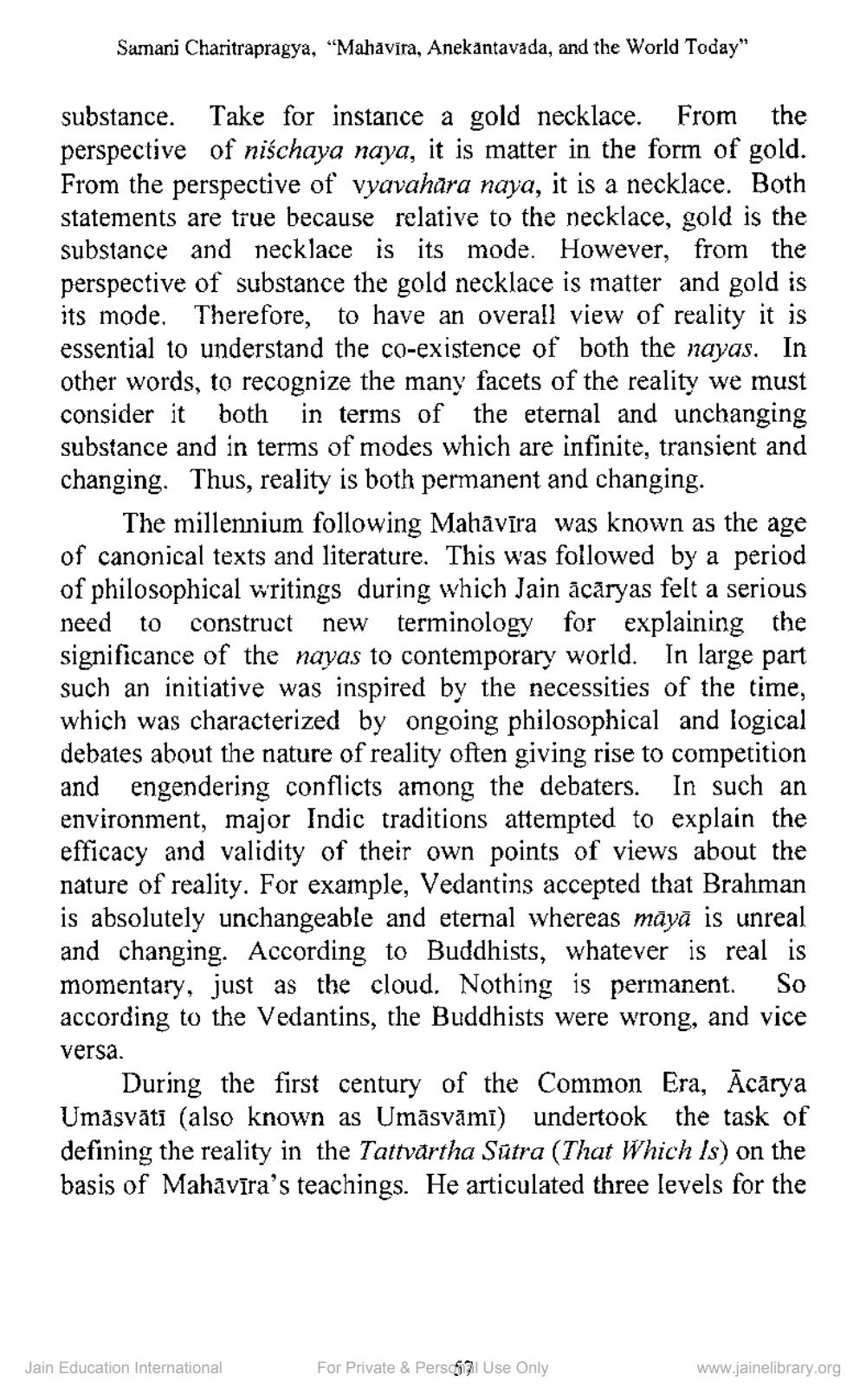Book Title: Mahavira Anekantavada and World Today Author(s): Charitrapragya Samani Publisher: Z_Lessons_of_Ahimsa_and_Anekanta_for_Contemporary_Life_014006.pdf View full book textPage 4
________________ Samani Charitrapragya, “Mahavira, Anekantavada, and the World Today" substance. Take for instance a gold necklace. From the perspective of nischaya naya, it is matter in the form of gold. From the perspective of vyavahara naya, it is a necklace. Both statements are true because relative to the necklace, gold is the substance and necklace is its mode. However, from the perspective of substance the gold necklace is matter and gold is its mode. Therefore, to have an overall view of reality it is essential to understand the co-existence of both the nayas. In other words, to recognize the many facets of the reality we must consider it both in terms of the eternal and unchanging substance and in terms of modes which are infinite, transient and changing. Thus, reality is both permanent and changing. The millennium following Mahavīra was known as the age of canonical texts and literature. This was followed by a period of philosophical writings during which Jain ācāryas felt a serious need to construct new terminology for explaining the significance of the nayas to contemporary world. In large part such an initiative was inspired by the necessities of the time, which was characterized by ongoing philosophical and logical debates about the nature of reality often giving rise to competition and engendering conflicts among the debaters. In such an environment, major Indic traditions attempted to explain the efficacy and validity of their own points of views about the nature of reality. For example, Vedantins accepted that Brahman is absolutely unchangeable and eternal whereas māyā is unreal and changing. According to Buddhists, whatever is real is momentary, just as the cloud. Nothing is permanent. So according to the Vedantins, the Buddhists were wrong, and vice versa. During the first century of the Common Era, Acārya Umāsvāti (also known as Umāsvāmi) undertook the task of defining the reality in the Tattvärtha Sutra (That Which Is) on the basis of Mahāvīra's teachings. He articulated three levels for the Jain Education International For Private & Persal Use Only www.jainelibrary.orgPage Navigation
1 2 3 4 5 6 7 8
